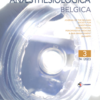The WHO Surgical Safety Checklist in Belgian hospitals: Changes in use, knowledge, opinions and perception of pressure among operating room professionals between 2016 and 2021
Patient Safety, Checklist, Operating Rooms, Guideline Adherence
Published online: Sep 19 2023
Abstract
Background: Implementing a Surgical Safety Checklist (SSC) poses several challenges. Operating room (OR) professionals’ opinions on SSC determine whether it is used. Additionally, OR professionals often complain of pressure for execution and presence of inappropriate components in the SSC.
Objectives: This study aimed to investigate whether the use of and opinions on SSC improved, and whether feelings of pressure and opinions on the appropriateness of the items changed.
Design: Repeated cross-sectional study.
Setting: An online survey was sent to all Belgian OR professionals (nurses, surgeons, and anesthesiologists) in 2016 and 2021.
Methods: Respondent characteristics were summarized using the proportions of discrete variables. Other data were analyzed using Pearson’s chi-squared test or Fisher’s exact test. A p-value (0.01) was considered statistically significant.
Results: In 2021, participation increased from 1419 to 2166 OR professionals. More participants stated that they used SSC, and that its use was more systematic. Opinions about SSC revealed a significant change in patients’ appreciation of SSC use (more positive) and signs of a lack of knowledge of the patient file (less negative). More negative feelings were observed when the SSC was not used. The OR staff experienced less time pressure to complete the SSC. Surgeons, anesthesiologists, and colleagues exerted more pressure on SSC use. The pressure for not using the SSC was low. Seven of the 22 SSC components were judged more appropriate by 2021. ‘Time Out’ improved more than ‘Sign In’ or ‘Sign Out’. Team member introduction remained the least-supported component.
Conclusion: SSC was used more often in 2021. Most of the opinions were positive. There was more pressure to use SSC. Most components were considered appropriate, except for team introduction. Local adjustments can align needs with the staff’s opinions. However, crucial components must be maintained.
